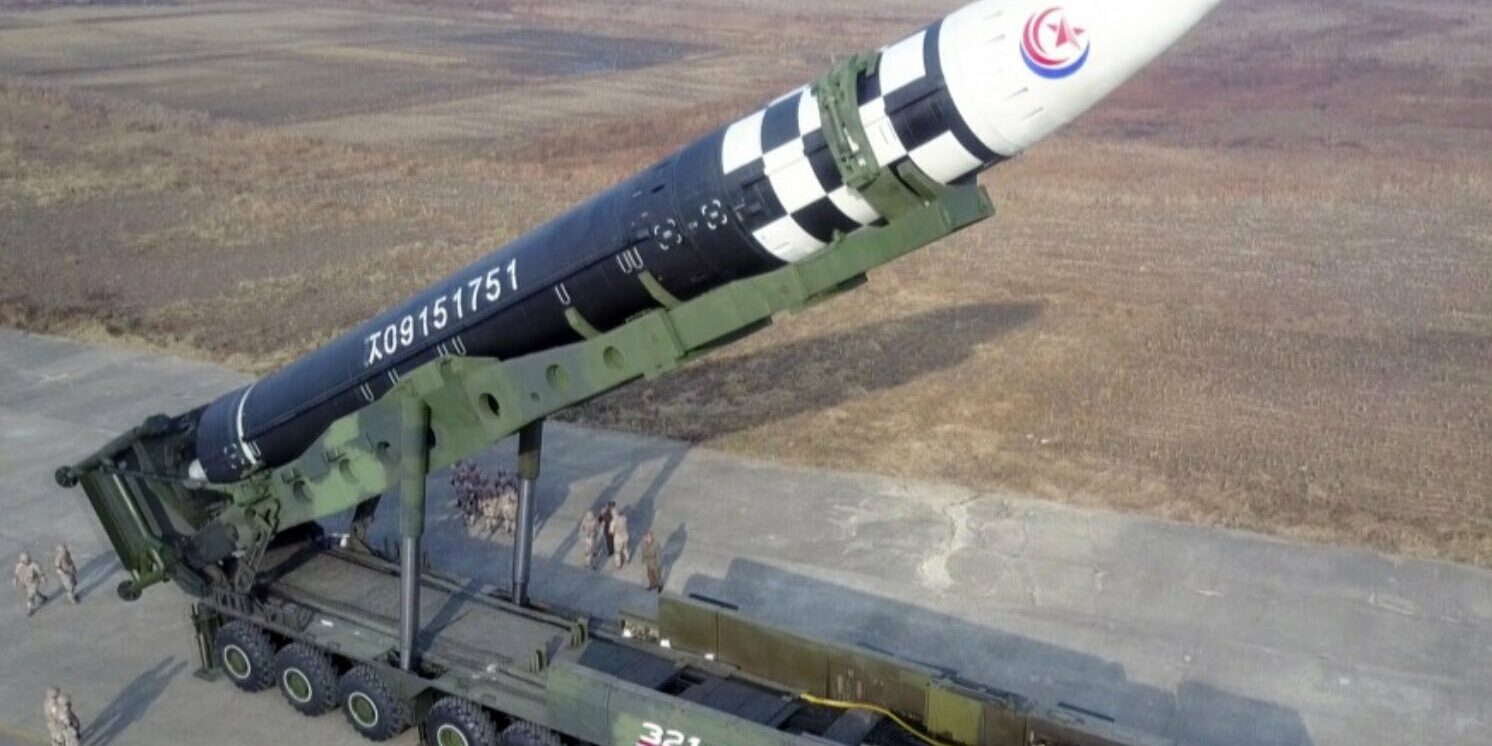| North Korea/ U.S. Designation | Hwasong-17/KN-27/8 |
| Mobility and Role | 11 Axel TEL, Road Mobile/Surface-to-surface Intercontinental Ballistic Missile |
| Designer/Producer | N/A |
| Range | 15,000km |
| Warhead Type and Weight | Nuclear/Conventional, 2,000kg-3,500kg |
| MIRV and Yield | 3-4 |
| Guidance System/Accuracy | N/A |
| Stages/Propellant | Two stage, liquid |
| IOC/Retirement | 2020 |
| Status/Number of Units | At least 11 missiles |
Overview
Revealed in October 2020, at a military parade commemorating the 75th anniversary of the Korean Workers’ Party, the Hwasong-17 is North Korea’s premier nuclear-capable ICBM, able to reach any area within the US and its territories. The latest test was November 3, 2022, in which the Hwasong-17 flew a distance of 1,000km and reaching a height of 6,000km. [I] According to a statement by the Pentagon, the DPRK tested the Hwasong-17 on February 27 and March 5, 2022. The DPRK conducted these tests under the guise of civilian space program testing. These tests represent the first North Korean ICBM launch since November 2017. On March 24, 2022, North Korea announced that it successfully tested the Hwasong-17. However, the South Korean Ministry of Defense, in a briefing to the National Assembly, stated that the footage released by the North Korean government was actually of a modified Hwasong-15. They argued that the released footage were actually edited scenes from an earlier missile test on March 16 that exploded in midair.
The Hwasong-17 is a two-stage liquid fueled missile, and recently has had developments made for solid fuel that would allow for easier storage and quicker deployment. One of the largest in the world, it is unusually large for a road-mobile ICBM, as most countries make their road-mobile ICBMs smaller to make it more mobile and concealable. There are multiple theories for this, including the belief that the DPRK seeks to merely intimitate its enemies with such a large system, however, there are also operational ones, including the possibility of multiple independently-targetable reentry vehicles (MIRVs), decoy warheads to defeat missile defenses, or simply a larger-yield single warhead. It is a Multiple Independent Re-entry Vehicle (MIRV), meaning that it can carry multiple separate warheads within the missile, estimated at between 3-4 depending on the sizes (2,000-3,500kg). [ii]
Strategic Implications
The Hwasong-17 is the foremost ICBM in the North Korean arsenal, holding multiple warheads almost 3 times larger than the Hwasong-15, and flying 2,000km further. With the MIRV, it has the capability to overwhelm US defenses and for the first time pose a credible nuclear threat to the US homeland. North Korea also has 70kg of enriched nuclear material, able to fill at least 55 warheads, creating a practical threat from all 11 active missiles. [iii] [iv]
Recent News
Sources
[i] Global Missile Tracker – Missile Defense Advocacy Alliance

